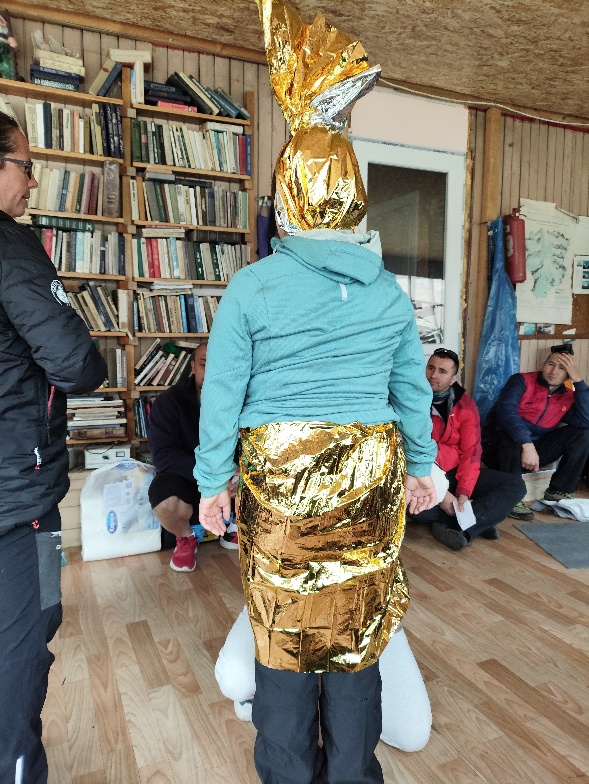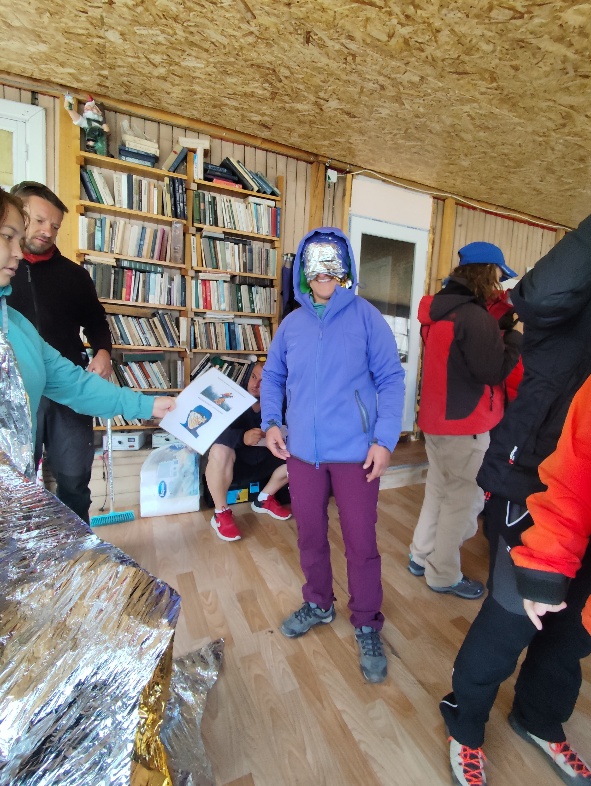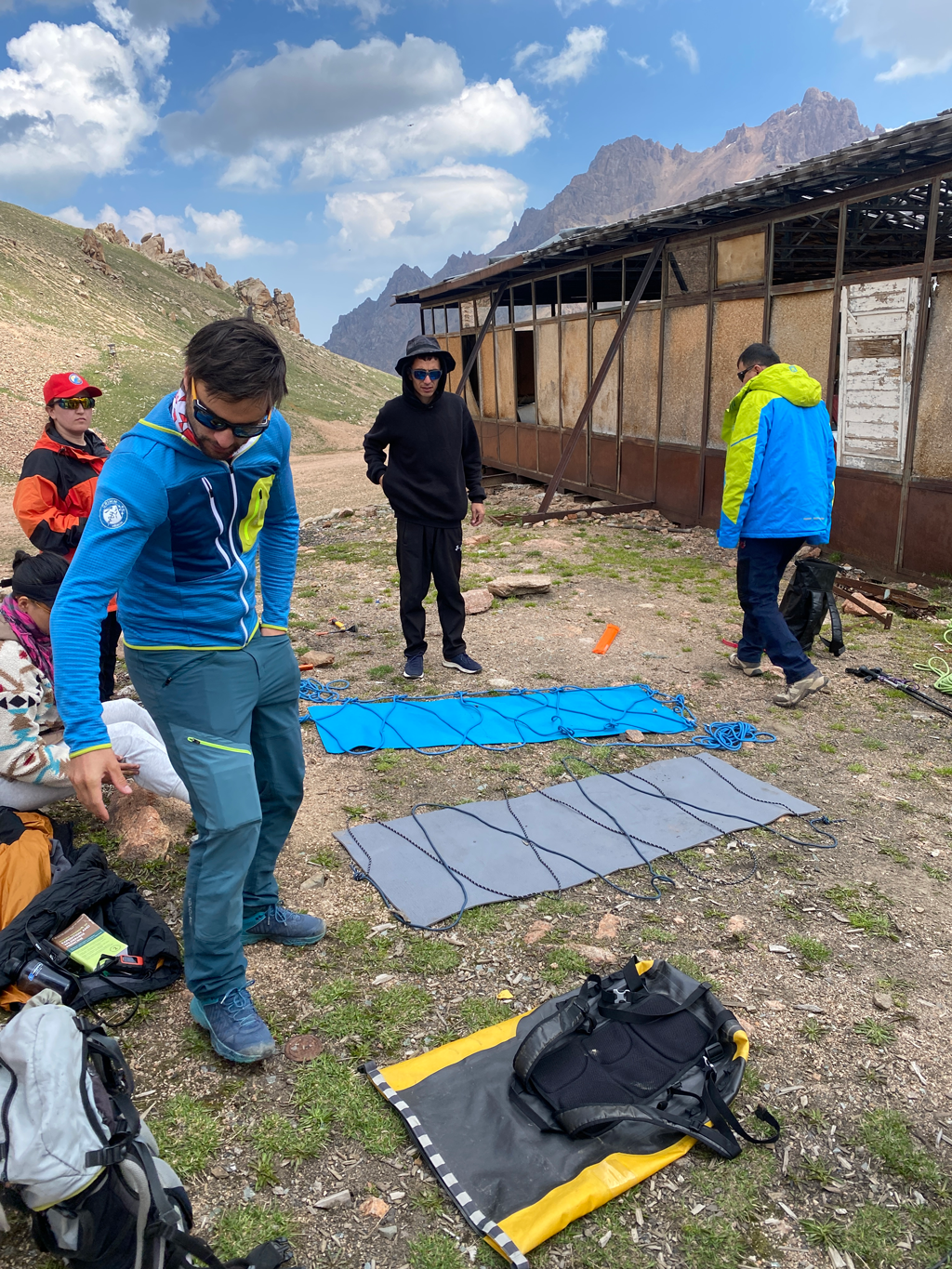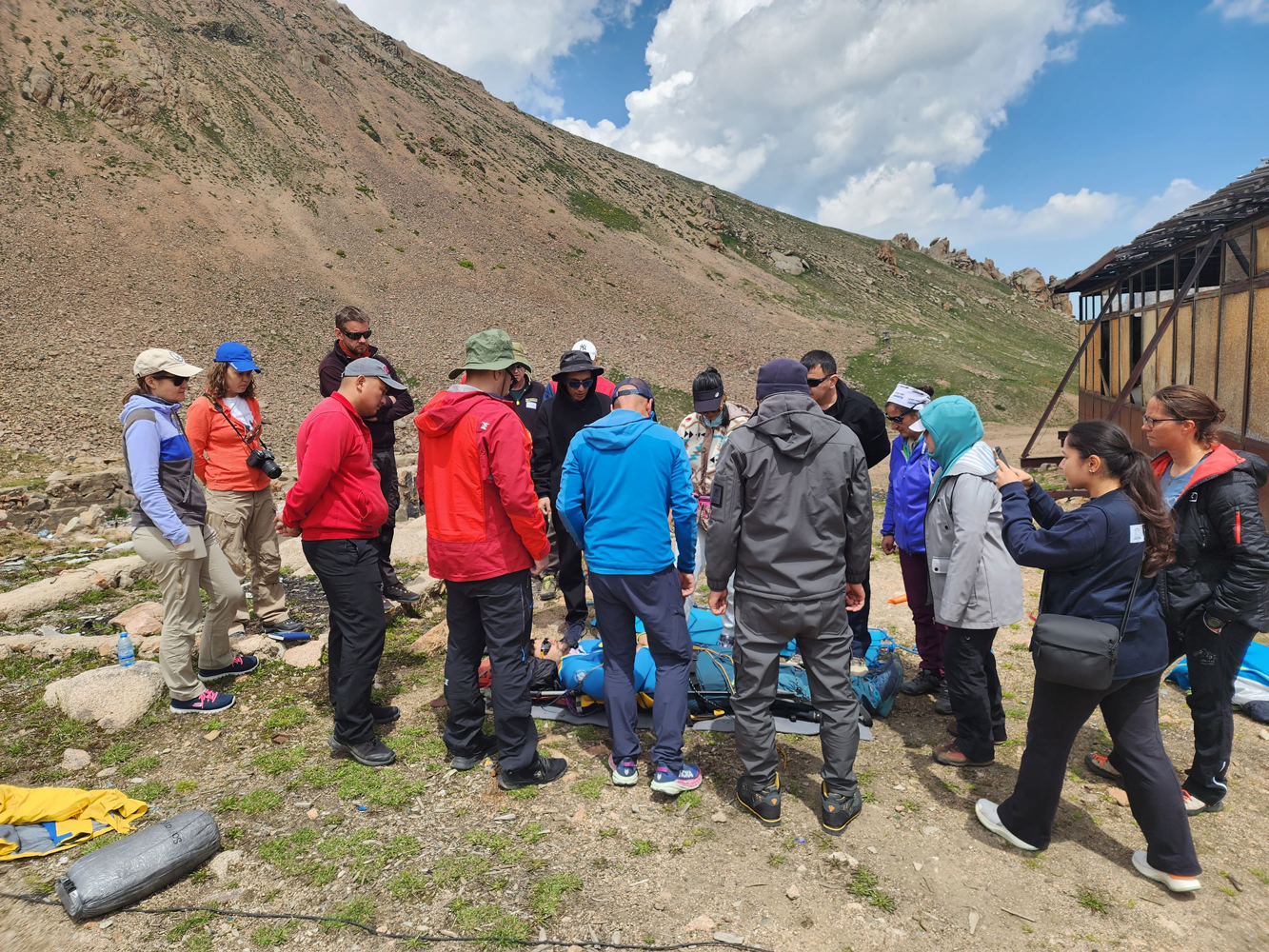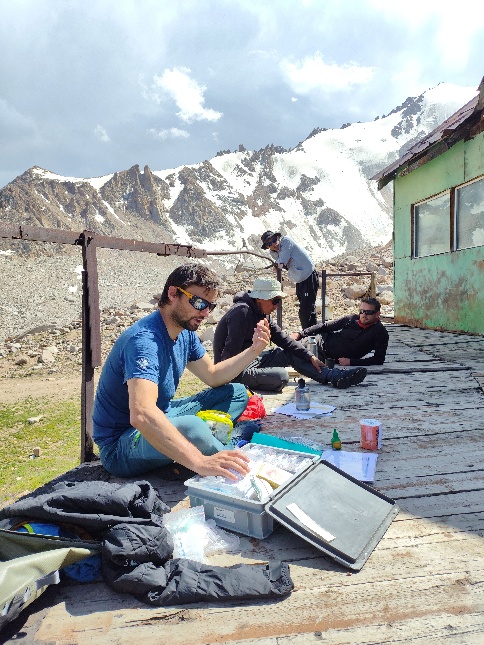Тренинг «Здоровье и безопасность в условиях высокогорий» на станции «Ледник Туйыксу» бассейн реки Киши Алматы
Training on “Health and Safety in High-Altitude Environments”
Tuyuksu Glacier Station, Kishi Almaty River Basin (June 17–19, 2025)
The Central Asian Regional Glaciological Centre (Category 2 under the auspices of UNESCO), in collaboration with representatives from the Swiss Polar Institute (SPI) and Groupe d’Intervention Médicale en Montagne (GRIMM), conducted a training session on “Health and Safety in High-Altitude Environments” at the Tuyuksu Glacier Station, located in the Kishi Almaty River Basin.
The training brought together 8 participants (including lecturers, young professionals, and organizers) from Kazakhstan, Kyrgyzstan, Tajikistan, Uzbekistan, and Switzerland.
The aim of the training was to provide theoretical and practical instruction to specialists working in mountainous environments on the main types of injuries, their causes, and emergency response techniques.
On June 17, participants were transported to the Tuyuksu Glacier high-mountain station, situated in the upper reaches of the Kishi Almaty River Basin at an elevation of 3,450 meters above sea level. Among the attendees were representatives from Switzerland, Kyrgyzstan, Uzbekistan, and Kazakhstan—a total of 16 participants.
The trainers included Barbara Weiss, Christophe Berclaz, and Louis Marxer—representatives of the Swiss Polar Institute (SPI) and Groupe d’Intervention Médicale en Montagne (GRIMM).
The training was structured around lectures followed by practical sessions. During the lectures, participants were introduced to the main types of injuries that may occur while working or traveling in mountainous terrain, their causes, and the methods of providing emergency assistance to affected individuals.
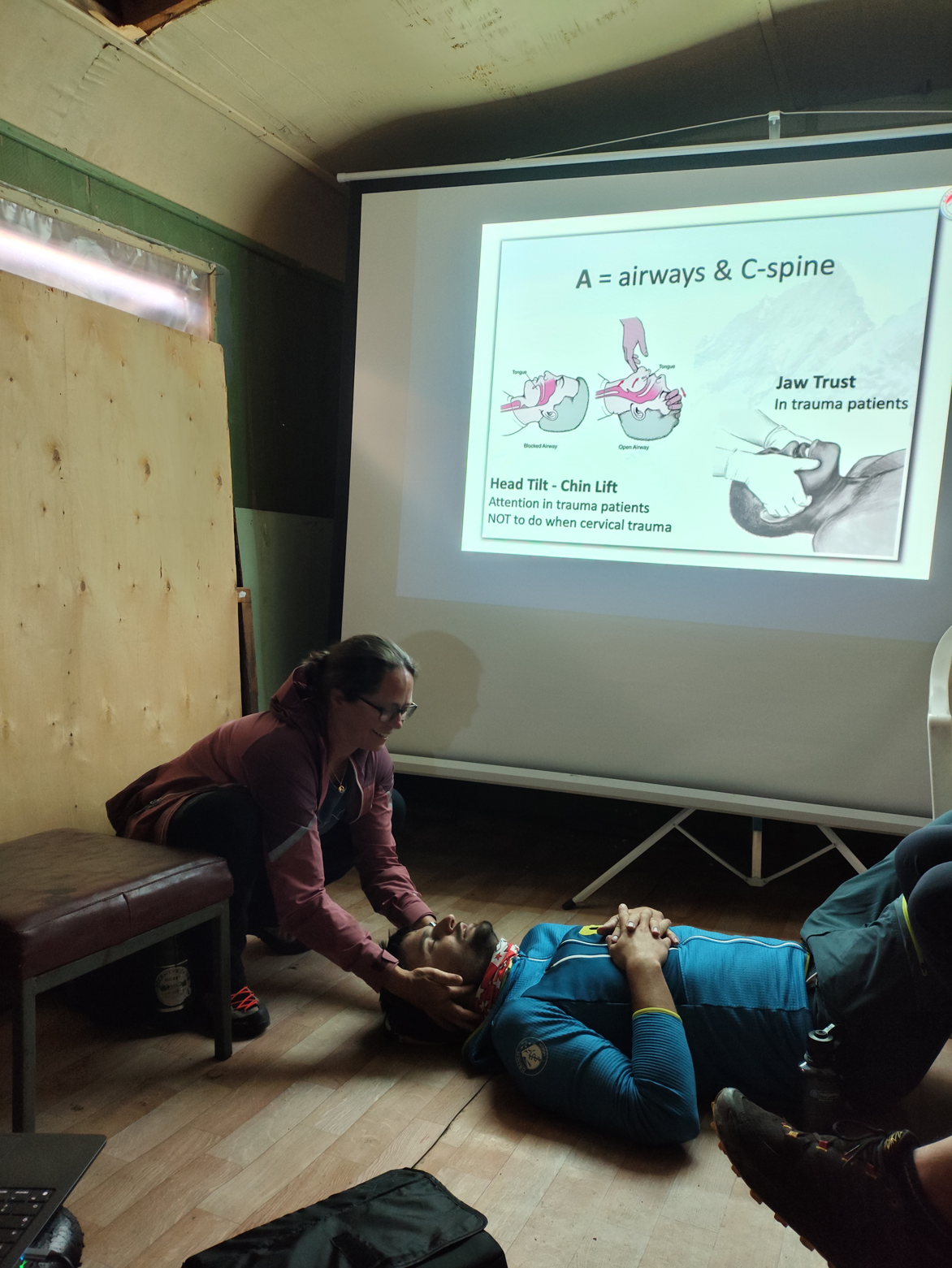
Theoretical session. Barbara Weis demonstrating first aid for cervical spine injury
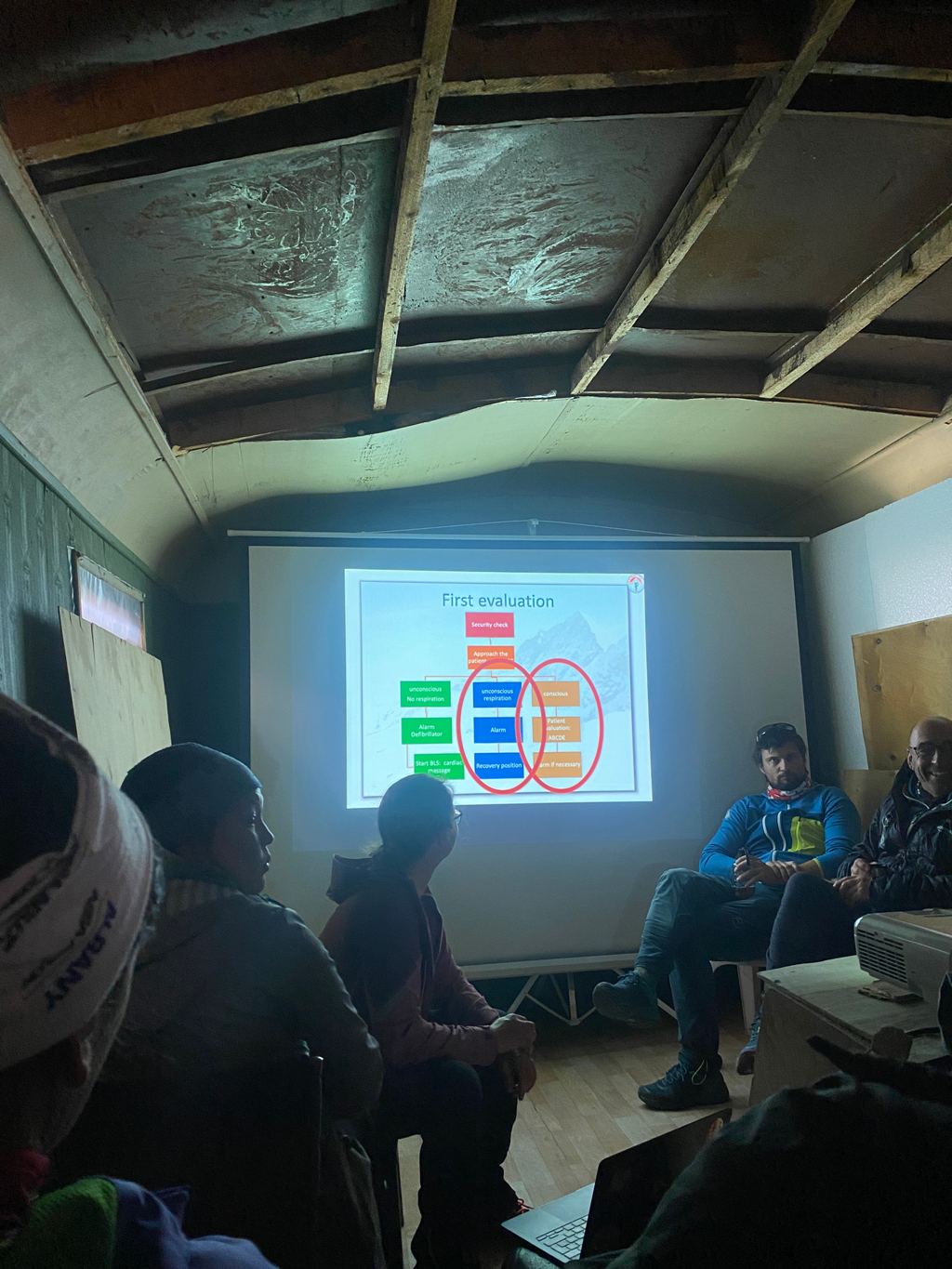
Theoretical session. Algorithm of actions for providing first aid to victims in the mountains
Examples were also provided of how the human body reacts when located in high-altitude areas (above 4,000 m a.s.l.), as well as methods that help mitigate the negative effects when the first symptoms of hypoxia, frostbite, etc., appear.
During the practical sessions, the material presented in the lectures was reinforced. The instructors demonstrated methods of emergency assistance using both improvised tools and professional equipment.
|
|
|
Practical session. Methods of protection from frostbite and ultraviolet solar radiation using improvised means
Special attention during the practical sessions was given to methods of evacuating victims unable to move independently, as well as to techniques for constructing transportation devices.
|
|
|
Practical session. Use of mountaineering gear to create evacuation equipment
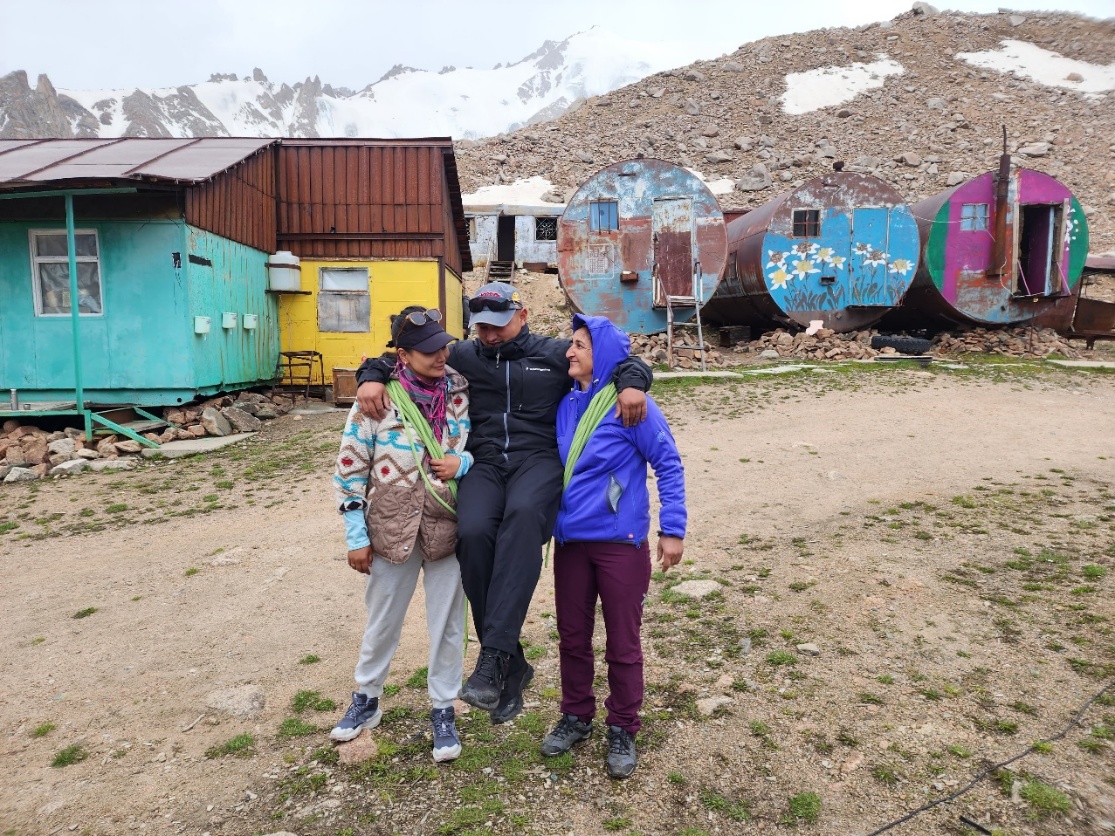
Practical session. Transporting an injured person using a mountaineering rope
During the practical training, participants also practiced methods of providing first aid for open fractures of the arms or legs using special flexible splints and elastic bandages.
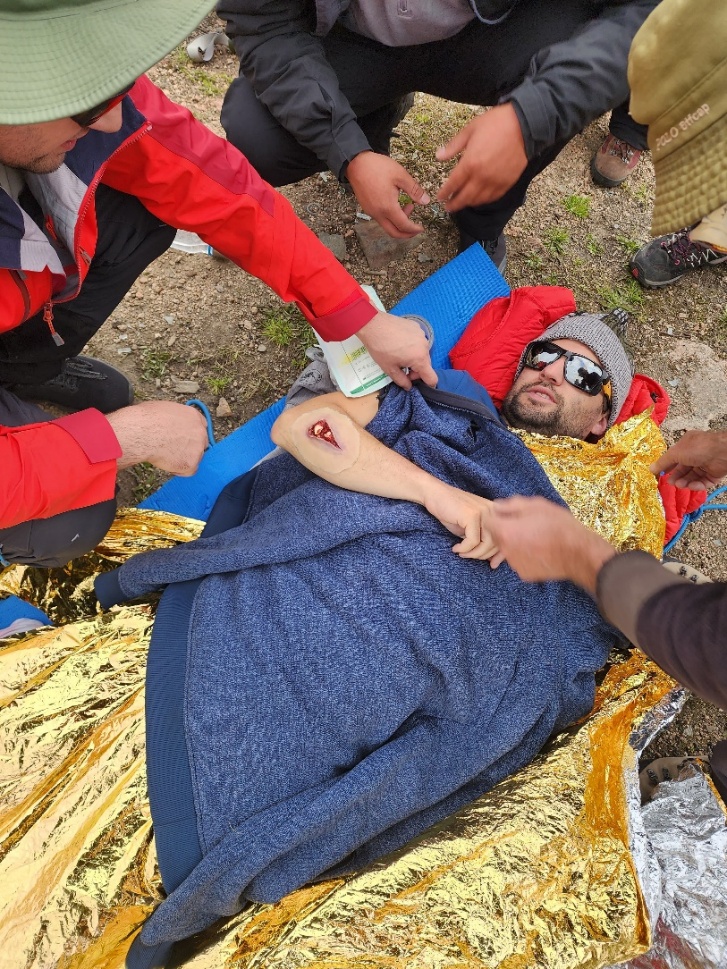
Practical session. First aid for an open arm fracture. Luis Marxer acted as the injured person with an improvised fracture
In the final part of the training, the instructors demonstrated modern medical supplies used for providing medical assistance in European Union countries.
|
|
|
Presentation of medical supplies and methods of their use
ПРОГРАММА
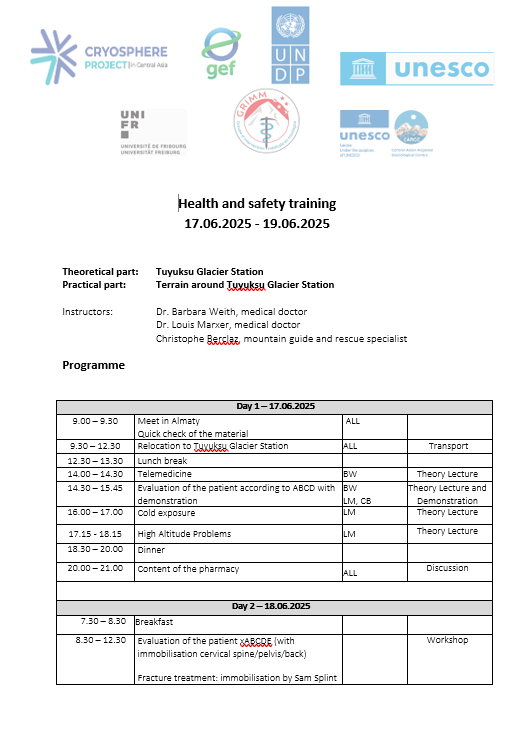

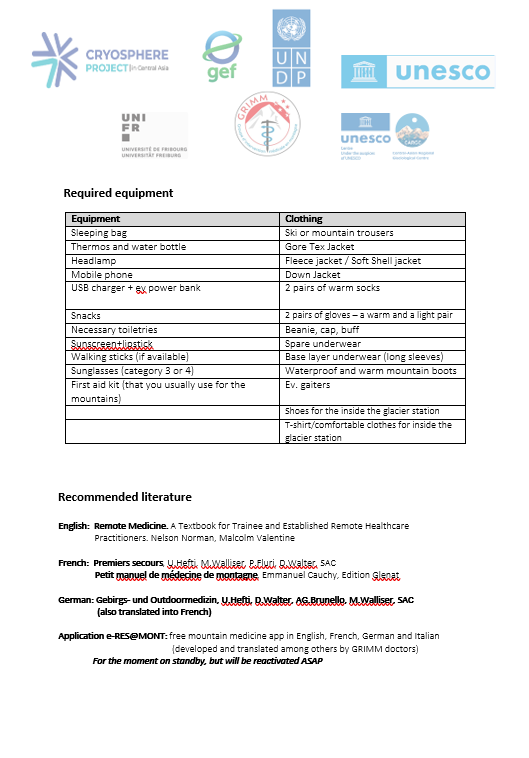
Health and Safety in High-Altitude Environments
July 31, 2025
